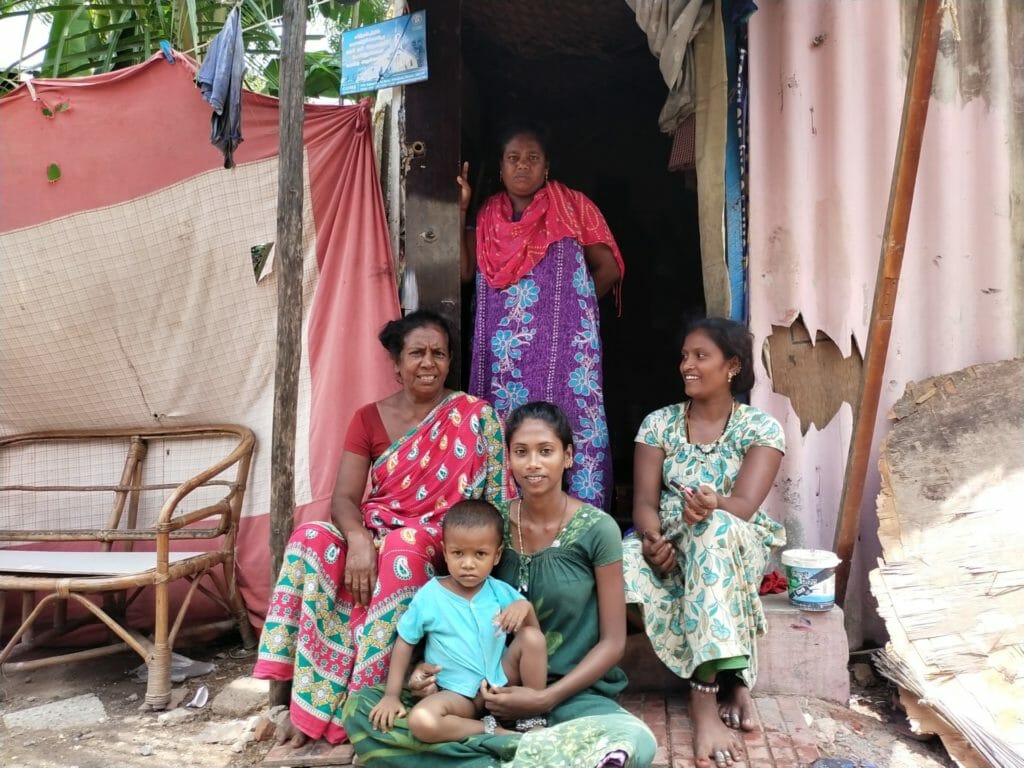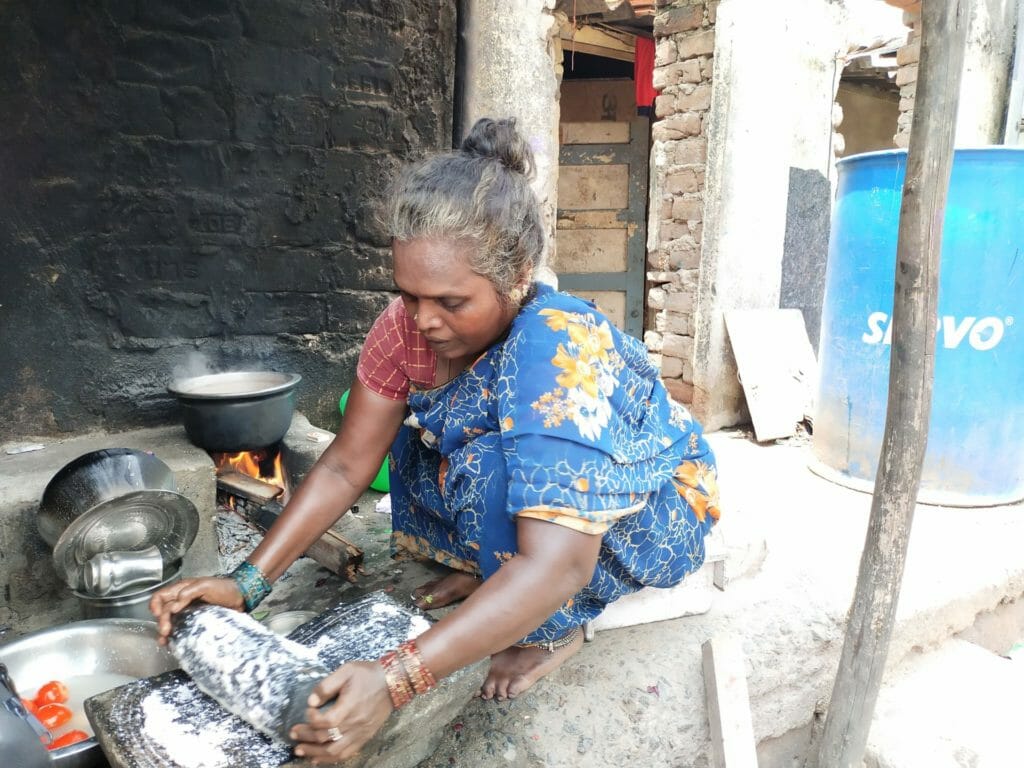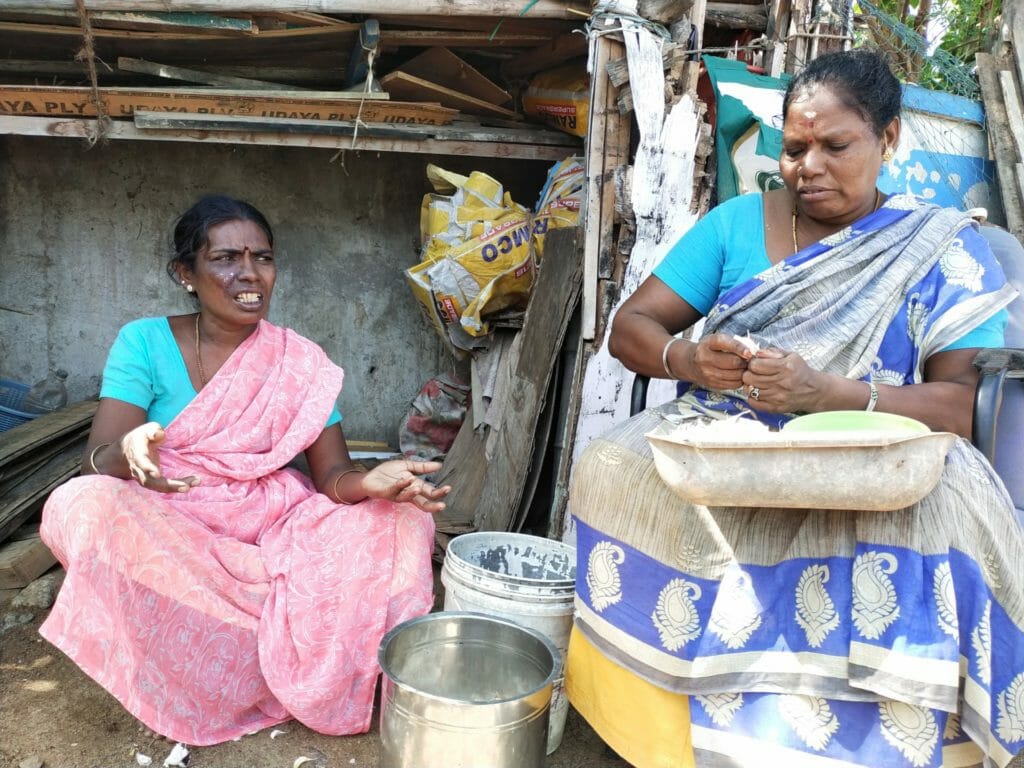“Many people from villages across Tamil Nadu came to Chennai to make a living. They moved here with the hope of improving the standard of living for their families and providing good education to their children. These people, who migrated in small groups from rural parts, eventually settled along the banks of rivers or water bodies. They built small huts to reside. The huts were prone to catching fire suddenly at any time and so the area came to be called Thideer Nagar,” says S Kathirvelan, a 60-year-old resident of Thideer Nagar in Saidapet.
But L Vijaya, a resident of Thideer Nagar in Raja Annamalai Puram, has a different take. She says, “Chains and ornaments worn by women in the locality would get snatched by thieves suddenly. People here would also get into a drunken quarrel at any time. These occurrences are common and spontaneous and so the place might have come to be called Thideer Nagar.”
Even if different residents have different interpretations of why their locality came to be called so, suddenness and precarity seem to be the defining feature of life in the many Thideer Nagars of Chennai. Though Thideer Nagars are located in various parts of the city, the life of the residents bears striking similarities in terms of lack of basic necessities and precarious living conditions.
What do the residents of Thideer Nagars feel about their place in the city? Has their aspiration for a better life come true in Singara Chennai?
Read more: Life beyond the murals in Chennai’s Kannagi Nagar
Struggles in Chennai’s Thideer Nagars

A palm tree spotted in the middle of a Thideer Nagar in Saidapet stands tall as a witness to the daily life of the people here. Kathirvelan says that the tree has been there for as long as he can remember. His ancestors moved to Chennai from Thanjavur many decades ago in order to find better work. They took up any work that came their way and earned their living as construction workers, rag pickers, domestic helpers and watchmen.
He has been in Thideer Nagar since his birth. Until recently, Kathirvelan ran a makeshift fancy shop.
“The government has evicted our shop from the platforms recently citing that we were encroachers. My sons were also in the same business. Ever since the eviction, we have hardly had any income. I had to undergo eye surgery recently and am unable to work now. My sons have had to take up any gig work that comes their way,” says Kathirvelan.
Kathirvelan could also lose his home soon, like hundreds of other residents in Thideer Nagar in Saidapet, due to eviction.
“The government has assured us while issuing eviction notices that vertical housing units would be built for us in 15 months and have taken a survey recently. They have asked us to move out in October but have not provided any financial assistance or alternative dwelling arrangements. Though we do not have patta, we have our own tiled roof houses here. If we have to go to a rental house, the deposit alone would cost a minimum of Rs 30,000. How can we afford such a huge amount?” asks Tara, another resident of Thideer Nagar in Saidapet.
Tara’s family lost all their belongings in the 2015 Chennai floods. “We have not been able to make up for the loss from the floods yet. Even after a short spell of rain, the rainwater would enter our houses. The drainage lines have also been blocked leaving sewage to stagnate on the pathways and enter the houses,” says Tara, adding that their only hope is to get a dwelling unit in the same area when the government makes good on its promise.
It is not just the rains that pose a threat to the residents of Thideer Nagar but also the heat in the summers.
Selvi, a resident of Thideer Nagar in Raja Annamalai Puram suffered burns on her face due to overheating from the asbestos roof of her house during a harsh summer day. But she has more pressing concerns than that at present.
“I lost my ration card in the 2015 floods and have not been able to get one to date. I live in a rental house and do not have the proof that the officials are asking me to bring,” says Selvi.
Having lost her husband in 2014, she is the sole breadwinner of her family. “I was working as a construction worker. We do not get work that frequently now. I could not even get free rice provided by the government since I do not have the ration card,” she says.
Anbukarasi, who was earlier working as a domestic worker in nearby apartments, says that many households had stopped employing them after the outbreak of COVID-19.
“A small food centre in the locality would pay us Rs 30 per kilogram for peeling garlic and this is my only source of income,” says Anbukarasi as she sits down to peel her quota for the day.

Ponnammal*, a resident of Thideer Nagar in Purasaiwakkam, was making Sunday lunch with wood fire. When asked why she was cooking with a wood fire instead of a gas stove, she says that she cannot afford a gas cylinder given the rise in price.
“I have to feed five people in my family and cannot afford to cook on a gas stove. I pick wood from nearby grounds in the morning and cook the whole day’s meal in the morning,” she says. This was the case with most of the houses in the locality.
Read more: Eviction in Govindasamy Nagar highlights precarious life of Chennai’s poor
A bleak future for the younger generation
The children and the youngsters in these localities stare at a bleak future. Selvi’s 15-year-old son used to attend the nearby government school before the outbreak of COVID-19. He found online classes hard to keep up with and was falling behind academically when school reopened. As a result, he dropped out of school and spends his time at home.
The same is the case with Kathir, a 10-year-old, from Thideer Nagar in Purasaiwakkam. He has taken to rearing doves to make money and does not see a path to continue schooling.

Priya*, a 21-year-old from Thideer Nagar in Purasaiwakkam, is now a mother to a 5-year-old child. “I had dreams to study but I got married when I was 15 and gave birth to a child in a year. I had to give up my studies,” she says.
Similarly, Ranjani*, who is the mother to a 9-year-old girl and a 7-year-old boy, is only 25 and also had to give up dreams of formal education.
Most of the youngsters work as auto drivers in Chennai or have moved to cities like Bengaluru to work as drivers.
“Many children here also get exposed to drugs at a very young age and that changes their life. Even when they want to stop using and selling drugs, the police in the locality forge fake cases against them which pushes them back into the same cycle,” says Ranjani.
The spectre of eviction in Thideer Nagars

Name any basic facility, be it drinking water, toilets, sewage lines, street lights, roads, sanitation or safety none of the three aforementioned Thideer Nagars have these amenities. It has taken over four generations for the residents to see their homes transform from thatched huts to tiled or asbestos-roofed houses. But a lot is still lacking to live a quality life in a Thideer Nagar.
Being the first to be hit by any natural or man-made disaster, many of the residents have lost hope in political parties or movements in the state. “No matter who comes to power, our lives are going to remain the same. At the end of the day, we have to work to get food on our plates. So, I did not cast my vote in the assembly elections,” says Anbukarasi.
This was the collective response of many residents in all three localities.
The residents of Thideer Nagars of Chennai are acutely aware of the threat of eviction. Eviction too can happen suddenly, without warning.
“We will protest and ask the government to build us houses in the same place,” say many of the residents when quizzed about what their response to such an event would be.
“After seeing the way the government handled the evictions at Govindasamy Nagar, now we are scared. We have been seeking a patta for many decades now and it has been a poll promise of almost all political parties. We have put in our whole life savings to build these houses and if they demolish these houses as they did in Govindasamy Nagar, we have nowhere to go,” says Arjunan, a resident of Thideer Nagar in Raja Annamalai Puram.
He further added that even when the government allocates houses, it is on the outskirts of the city like Kannagi Nagar or Perumbakkam, “How could we make a living from daily wage jobs, if we had to spend most of the income on travel expenses?” he asks.
*names changed on request
